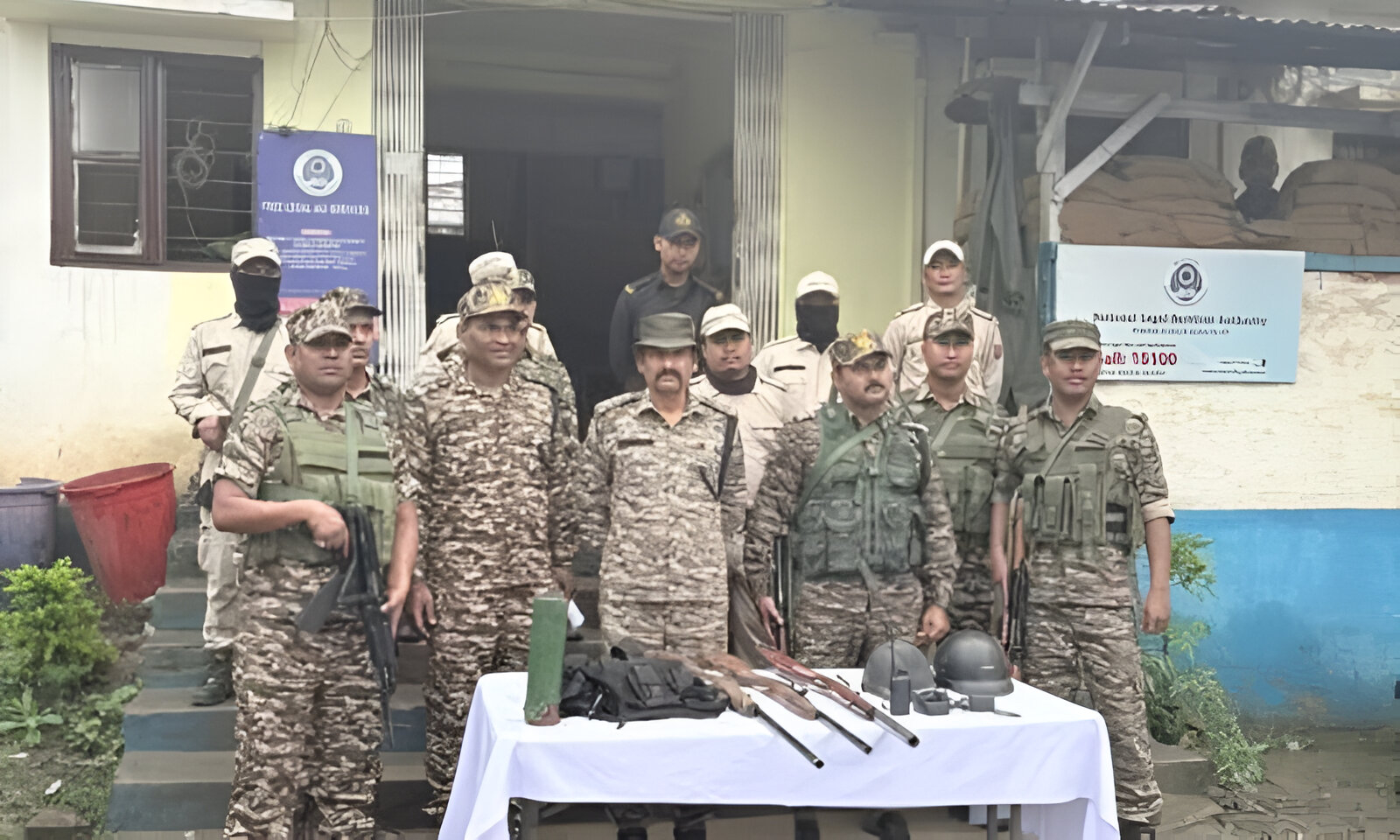Security Forces Uncover Hidden Arms in Manipur Hills
Quick Summary
In a significant operation on May 31, 2025, Indian security forces, in coordination with the state police, unearthed a cache of weapons from the forested areas of Churachandpur district in Manipur. The operation, conducted in the Dampi Hill forest area near H. Kotlian under Churachandpur police station, led to the recovery of various arms and ammunition, including country-made shotguns, a bulletproof jacket, helmets, and communication equipment. This successful operation follows a similar one on May 28 in the same district, where a large cache of warlike stores was recovered from the forested areas of Torbung and Teijang villages.
In-Depth Analysis: Unveiling the Hidden Arsenal in Manipur’s Hills
1. The Operation’s Unfolding
The joint operation by India’s security forces and the state police was a meticulously planned mission aimed at curbing insurgent activities in Manipur’s Churachandpur district. Acting on specific intelligence, the team targeted the Dampi Hill forest area near H. Kotlian, a region known for its dense forests and challenging terrain. The operation culminated in the recovery of various arms and ammunition, including three 12 Bore Single Barrel Shotguns (country-made), one Pumpi, a bulletproof jacket with plate, two helmets, a radio set, and two radio set chargers.
This operation was a follow-up to a similar one conducted on May 28 in the forested areas of Torbung and Teijang villages under the same police station’s jurisdiction. In that operation, the team recovered a 5.56 mm INSAS Rifle with one magazine, an M-16 Rifle with a magazine, a single-barrel rifle (country-made), three Pompi guns (locally made), ten 5.56 mm ammunition, three 7.62 mm ammunition, three 12 Bore rounds, and two country-made hand grenades.
2. Strategic Significance of the Location
Churachandpur district, particularly areas like Dampi Hill, Torbung, and Teijang, has long been a hotspot for insurgent activities due to its proximity to the Indo-Myanmar border. The region’s challenging terrain and limited surveillance make it a preferred route for insurgents seeking to cross borders undetected.
3. Broader Context: Insurgency in Manipur
Manipur has been grappling with insurgency for decades, with multiple groups advocating for various causes, ranging from ethnic autonomy to complete secession. The recovery of such a significant cache of arms and ammunition underscores the persistent challenges posed by insurgent groups exploiting border vulnerabilities.
4. The Role of the Indo-Myanmar Border
The Indo-Myanmar border, stretching over 1,600 kilometers, is characterized by dense forests and rugged terrain, making it challenging to monitor. This has allowed insurgent groups to establish camps and move freely between the two countries. Efforts to fence the border have been ongoing, but progress has been slow due to logistical challenges and concerns over affecting local communities.
5. Implications for Regional Security
The successful execution of these operations underscores the Indian Army’s commitment to maintaining peace and security in the Northeast. However, the operations also highlight the persistent challenges posed by insurgent groups exploiting border vulnerabilities. Continuous intelligence gathering, community engagement, and infrastructural development are essential to counter these threats effectively.
❓ Frequently Asked Questions (FAQs)
Q1: What was the purpose of the recent operations in Churachandpur district?
A1: The operations aimed to uncover and seize hidden caches of arms and ammunition used by insurgent groups operating in the region.
Q2: What types of weapons were recovered during these operations?
A2: The recovered items included country-made shotguns, rifles, hand grenades, a bulletproof jacket, helmets, and communication equipment
Q3: Why is Churachandpur district significant in the context of insurgency?
A3: Its proximity to the Indo-Myanmar border and challenging terrain make it a strategic location for insurgent activities and cross-border movements.
Q4: How do these operations impact the local communities?
A4: While such operations aim to enhance security, they can also lead to increased military presence, affecting daily life. However, they are crucial for long-term peace and stability in the region.
Q5: What measures are being taken to prevent future insurgent activities in the region?
A5: Continuous intelligence gathering, community engagement, infrastructural development, and efforts to fence the Indo-Myanmar border are among the measures being implemented to counter insurgent threats.




